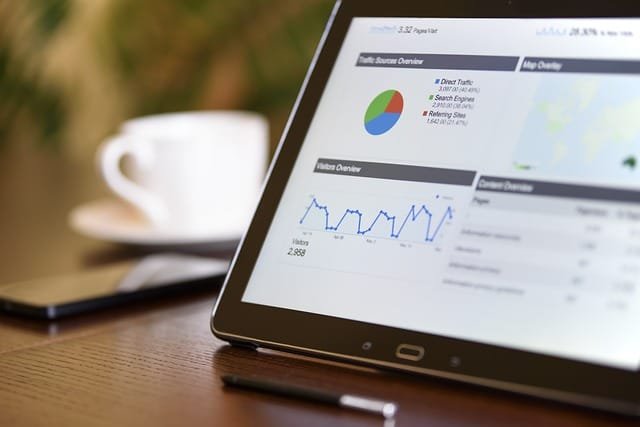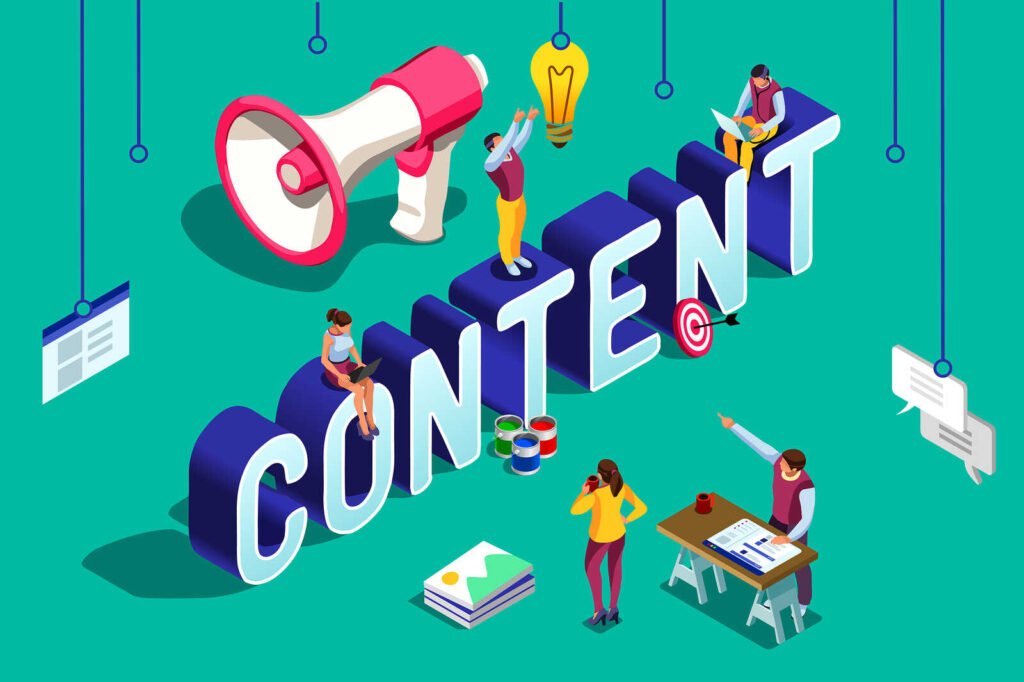In the fast-paced world of digital marketing, where attention is fragmented and the competition fierce, businesses are constantly on the lookout for innovative strategies to captivate their audience. Amidst the noise and clutter of content overload, one element has emerged as a universal language that transcends geographic, linguistic, and cultural boundaries – visual content.
This article delves deep into the world of visual content in modern marketing, unraveling its unprecedented impact, and showcasing why it is not just an essential but a cornerstone for any robust marketing strategy in today’s digital landscape. We’ll explore real-world examples, provide actionable insights, and walk you through the journey of transforming your content strategy by harnessing the power of visuals.
A Picture is Worth a Thousand Words
The age-old adage, “A picture is worth a thousand words,” has never been more relevant. Visual content, including images, videos, infographics, and other multimedia elements, has proven to be immensely effective in conveying complex messages swiftly and engagingly. In a world where consumers are bombarded with information, visual content stands out, offering an oasis of clarity, engagement, and connection.
The Rise of Visual Content
Visual content isn’t a new concept, but its prominence in digital marketing has surged exponentially in the recent decade. With the proliferation of social media platforms and the exponential growth of mobile device usage, visual content has become the language of the internet. It’s crisp, clear, and communicates messages instantaneously, something that resonates with the fast-paced, on-the-go lifestyle of the modern consumer.
The Science Behind It
Our brains are wired to process visuals 60,000 times faster than text. This neurological preference underscores the potency of visual content in capturing attention, facilitating comprehension, and enhancing retention. In the scrolling economy, where users swipe through content at lightning speed, visuals act as anchors that halt, engage, and immerse the audience in a narrative that’s not just seen but felt and experienced.
The Power of Videos
As we transition deeper into the visual content ecosystem, videos emerge as the crown jewel, driving unprecedented engagement and conversion rates. With platforms like YouTube, Instagram, and TikTok amassing billions of users, the power of video content is undeniable.
Real-World Impact
Brands leveraging video content aren’t just telling stories; they’re building experiences that immerse viewers, turning passive audiences into active participants. For instance, tutorials, product reviews, and behind-the-scenes glimpses aren’t just promotional content but invaluable resources that empower, educate, and entertain.
Infographics and Data Visualization
Beyond videos, infographics and data visualization tools have carved a niche, transforming complex data into compelling visual narratives. They’re not just decorative elements but powerful storytelling tools that encapsulate intricate information in an easily digestible, engaging format.
Enhancing Comprehension
Imagine a dense, statistic-laden report. Now, picture those data points illustrated as a vibrant infographic. The latter doesn’t just translate data but brings it to life, ensuring that the core message isn’t just communicated but retained.
Social Media and Visual Content
In the realm of social media, visual content reigns supreme. Platforms are engineered to prioritize visuals, from Instagram’s image-centric interface to Facebook’s algorithm favoring visual posts. Here, imagery isn’t optional but integral.
Engaging the Audience
Visuals humanize brand narratives, transforming abstract messages into tangible entities. Every image, video, or infographic isn’t just a content piece but a bridge that connects brands to audiences on a personal, emotional level.
User-Generated Visual Content
As we advance into the new-age digital renaissance, the dynamics of content creation and consumption are evolving. Brands are no longer the sole content creators. Instead, users are stepping into the realm, painting the digital canvas with their creativity.
The Authenticity Quotient
User-generated content, especially visuals, resonate at a frequency that’s often untouched by brand-generated narratives. It’s raw, real, and resonates with authenticity. For instance, consider customer testimonials, not delivered as text but as vibrant videos or image series.
Interactive Visual Content
The engagement metrics soar when content shifts from being a monologue to a dialogue. Interactive visual content like quizzes, polls, and live videos involve the audience, making them active participants in the content journey.
Enhancing User Experience
Interactive elements augment the user experience. It’s not just about viewing content but engaging with it, adding a layer of personalization and customization that’s unprecedented.
Visual Storytelling
The art of storytelling has transcended beyond the textual parameters. Visual storytelling embodies a language that’s universal, breaking through linguistic, cultural, and geographical barriers.
Creating Emotional Connections
Every image or video tells a story. It encapsulates a moment, emotion, and narrative that’s tangible and real. For brands, it’s an opportunity to weave narratives that connect, not as corporate entities, but as entities that breathe, emote, and resonate.
The SEO Advantage
While the immersive and engaging quotient of visual content is well acknowledged, its impact on SEO can’t be ignored. Google’s algorithm has evolved to prioritize user experience, and engaging visual content is integral to this equation.
Image and Video Optimization
Optimizing visual content, from alt texts for images to metadata for videos, enhances search engine visibility. It’s not just about having visual content but ensuring it’s discoverable, accessible, and indexable.
Future Trajectories
As we gaze into the future, the role of visual content in marketing is slated to expand. With technologies like VR and AR stepping in, the visual content landscape is on the brink of a revolutionary transformation.
Embracing New Realities
Virtual reality and augmented reality are not futuristic concepts but present-day realities. Brands leveraging these technologies are not just creating content but worlds where narratives are lived, experienced, and not just viewed.

Related: Check out our free SEO suite

AI and Machine Learning in Visual Content
In the world of digital marketing, artificial intelligence (AI) and machine learning are catapulting the efficacy of visual content to unprecedented heights. These technologies offer nuanced insights and automation capabilities, providing bespoke, engaging visual experiences for users.
Intelligent Content Creation
Brands are utilizing AI to enhance creativity and efficiency. With AI, content creators can analyze extensive datasets to understand audience preferences, enabling them to craft content that resonates. It facilitates the automatic generation of graphics and videos tailored to users’ behaviors and interests, making content more relevant and engaging.
For instance, AI tools like DeepArt and Daz 3D use algorithms to analyze and replicate artistic styles, producing bespoke visual content at scale. The future promises more innovations, with AI creating intricate designs and interactive visuals autonomously.
Personalization at Scale
In the past, marketers faced the Herculean task of personalizing content for vast audiences. AI has mitigated this challenge, enabling content customization at an industrial scale. Machine learning algorithms sift through vast data, ensuring each piece of visual content aligns with individual user preferences.
Applications like Netflix and Amazon are already harnessing AI for personalized recommendations. Future integrations promise real-time personalization, where content adapts in the moment based on user interactions.
The Rise of Visual Search
Visual search is emerging as a pivotal element in online user experience, powered by AI. It transforms images into search queries, making product discovery intuitive and engaging.
Seamless Discovery
AI enables users to discover products and information through images. Google Lens and Pinterest Lens are pioneers, offering users product recommendations and information through image recognition technology. The future promises increased accuracy and speed, with AI offering real-time insights and recommendations.
Augmenting Reality, Enhancing Experiences
AR is revolutionizing the interaction between users and visual content, powered by AI’s data processing capabilities.
Virtual Trials
Brands leverage AR to provide virtual trials, offering users an immersive experience. Fashion retailers use it for virtual try-ons, while furniture stores enable customers to visualize products in their space. AI enhances these experiences, processing data in real-time to provide accurate, realistic visualizations.
The future of AR and AI integration promises more immersive experiences. Users could walk through virtual stores, trying products in real-time with AI offering personalized recommendations based on preferences and interactions.
Integrating with Social Media
Visual content is the linchpin of social media platforms. AI enhances user engagement by personalizing and optimizing visual content.
User Engagement Metrics
Platforms like Instagram and TikTok are integrating AI to analyze user interactions and optimize content delivery. AI assesses likes, shares, and comments to enhance content visibility and engagement.
Future trends point towards more interactive visual content. AI will enable real-time content adaptation, with visuals changing based on user interactions, ensuring each user’s experience is unique and engaging.
The Integration of Data Analytics in Visual Content Marketing
Data analytics is permeating every corner of business, and in the context of visual content, it’s become the bedrock for informed decision-making and strategy optimization. Harnessing data analytics, brands are dissecting user engagement metrics and behaviors, enabling them to tailor visual content that’s not just visually appealing but is also highly effective in driving engagements and conversions.
Enhancing Content with Data Insights
Visual content isn’t about aesthetics alone; its effectiveness is gauged by the engagement it fosters and the conversions it drives. Marketers use data analytics to gather insights into how users are interacting with content. Every click, view, share, and like is a piece of the puzzle, offering a clearer picture of the audience’s preferences and behaviors.
Tools like Google Analytics, SEMrush, and Tableau have become indispensable. They provide insights on content performance, allowing marketers to tweak and optimize their visual content strategies for maximum engagement.
A/B Testing Visual Content
Data analytics has made A/B testing more efficient. Marketers can now create different versions of visual content to discern which resonates the most with their target audience. Real-time data analytics ensure that decisions are made swiftly, optimizing content for better engagement, click-through rates, and conversions.
For example, changing the color scheme, layout, or images can have a significant impact on engagement levels. Marketers are continually testing these elements to ascertain the combinations that elicit the most positive responses from the audience.
Predictive Analytics
Predictive analytics is gaining traction in visual content marketing. By analyzing trends and patterns from historical and current data, predictive models can forecast future trends and user behaviors. This foresight is invaluable for crafting visual content that aligns with anticipated future preferences, ensuring content remains relevant and engaging.
Personalization Driven by Data
One size no longer fits all in the digital marketing landscape. The era of mass content has given way to personalized experiences, where content is tailored to individual preferences. Data analytics is the engine driving this transition.
User Segmentation
Data analytics enables marketers to segment their audience based on various parameters like demographics, online behavior, and preferences. Visual content is then tailored to these specific segments. It enhances engagement levels as users find the content more relatable and in sync with their preferences.
Dynamic Content
The integration of AI and data analytics has given rise to dynamic content. Websites and online platforms can now change content in real-time based on the user’s behavior and preferences. Visual content adapts to offer a personalized experience, increasing the chances of engagement and conversions.
Future Trends
The future of data analytics in visual content marketing is replete with possibilities. Real-time analytics, AI integration, and machine learning will continue to evolve, offering nuanced insights and predictive models that are more accurate. Privacy and data security will gain prominence, as the collection and utilization of data come under stringent regulatory oversight.
Conclusion
The amalgamation of AI and visual content marketing is forging a new era of personalized, interactive user experiences. With innovations in content creation, personalization, visual search, AR, and social media integration, the future of visual content is dynamic and user-centric.
Brands that adeptly leverage these innovations will witness enhanced user engagement, loyalty, and conversion rates. The key is adaptability, with brands needing to be agile, ready to integrate emerging technologies to offer unparalleled user experiences.
READ NEXT:
- The Power of Storytelling in Content Marketing [Real-World Examples]
- How to Dominate Google Rankings for Every Type of Loan Service
- Digital Marketing in the Age of Voice Search: Adapting to New User Behaviors
- Strategies for On-Page SEO for PDFs and Documents
- How to Use VWO: An Explainer






















Comments are closed.